Last Updated on by Mitch Rezman
The quality of light is of little use for a pet bird. It’s the light cycle that means everything.
Is lighting necessary to house parrots properly?
Are there any specific requirements for the lighting?
To be clear, the light coming into your home through its windows has little or no value to the bird in your cage.
Editor’s note: Home window glass strips all UVA/UVB from said sunlight
Recently, a regular customer of ours visiting the Birdie Boutique came in seeking solutions for her Congo African grey that she recently started plucking.
She had come in seeking vitamins or any other nutritional supplements that we could suggest to help shut down her bird’s feather self-destruction.
When I hear this one of my first questions is, “How can we determine if there were any plucking triggers provided to the bird recently?”
She thought about it for a minute and related to me that the Congo grey lives with her mother and sister.
Editor’s note: There are two flavors of African grey, Congo and Timneh. Timnehs can be 100 or more grams lighter than Congo’s coming in about the size of the largest of (Patagonian) conures
The sister thought that the bird would be more entertained by putting it in front of the big picture window rather than having the cage sit in the corner of the living room.
The 17-year-old bird who had been with the woman from post-weaning days began to pluck when the birdcage was moved in front of the large picture window.
I explained that birds don’t know the meaning of glass and although activities outside of the home can be entertaining to a bird there are many raptors like Peregrine falcons who populate the skies of Chicago, especially in Hyde Park where she lived.
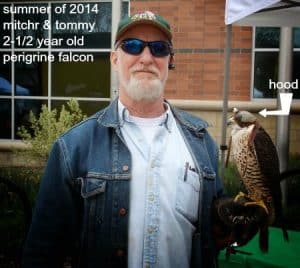
FYI: Hyde Park is also noted to have a huge Quaker parrot or monk parakeet population.
I advocated that the bird be moved back to the boring corner of the living room where it originally resided and full spectrum lighting be introduced.
This blog post will hopefully help you understand why I made that suggestion.
As a side note, I suggested adding Prime powdered supplement to the bird’s diet because it was known to have a vitamin A deficiency.
We also talked about introducing Lafebers Avi Cakes so the powdered supplement can be sprinkled upon this very nutritious treat that is held together by molasses making it the perfect medium to introduce powdered supplement in that it is very sticky.
Full-spectrum lighting will also help birds’ feather colors appear brighter.
Some birds feathers can actually reflect UV light (budgies for one) used for choosing a mate
To understand the effects of lighting and birds you have to understand the anatomy of a bird.
All birds have a small gland called the pineal gland behind the right eye.
This gland acts as an input mechanism for light data.
All birds use this light coming into the pineal gland to help determine when to breed, molt, and migrate.
The gland also contains many melatonin cells that vibrate like micrometronomes.
Although a bird cannot tell what day it is, it knows what time it is because of these vibrating melatonin cells.
99.9% of cage bird keepers get the lighting thing wrong.
The quality of light has little use for a bird.
It’s the light cycle that means everything.
I can’t tell you how many behavioral issues we have helped our customer’s birds simply by installing a full-spectrum or quality bright daylight bulb in a fixture, no more than 6 inches over the cage on a timer.
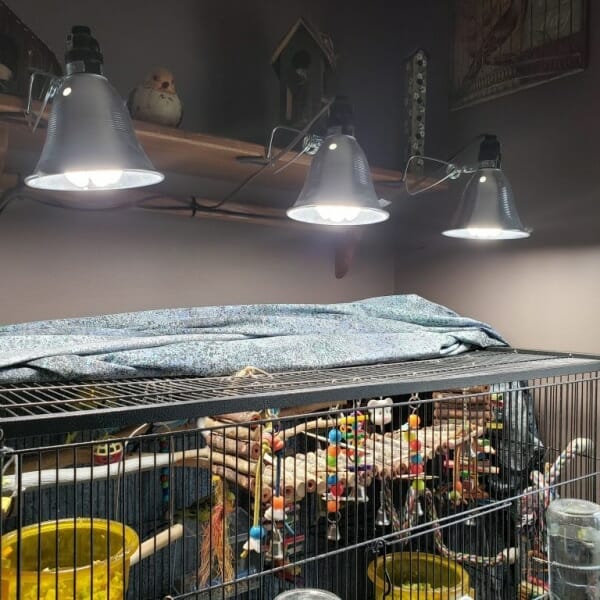
Windy City Parrot’s Budgie Aviary lighting
The distance is very important as even a 15,000 LUX light bulb emits only 700 LUX at a 20-inch distance (Google “inverse square law of light”). The timer needs to be set for 12 hours of light and 12 hours of darkness. The birds should be in the cage when the light comes on in the morning and goes off for the night. This signals to the bird the beginning and the end of the day which is close to their instinctual expectations of equatorial light cycles.
We’ve also found great efficacy in stopping chronic masturbation and prolific egg-laying in birds by using extended light cycles (72 – 168 hours) with no need for drugs (like Lupron or Haldon).
Feel free to fact-check me with Dr. Gregory Harrison the creator of Harrison’s bird food.
The folks at HARI, the Hagen Avicultural Research Institute have housed about 250 breeding pairs of wild-caught and domestic parrots for the past 30 years for use in the development of the Hagen bird food line and testing of things like light cycles.
In conjunction with the folks at Ontario Veterinary College | the University of Guelph, HARI has determined the importance of artificial light cycles for birds and that light has no effect on the production of vitamin D3 in birds because of their integumentary system (feathers).
Best of luck
MitchR
Bill T had this to add about the birds and lighting discussion:
Attn: MitchR
Something I passed over casually before in the “We got it wrong” blog on ‘full spectrum light’ just was noticed.
Info for more understanding,
I hope you include this if mentioned, in future articles.
“The pineal gland is photo-receptive in all non-mammalian vertebrates, but not in mammals.
The only non-visual photo-receptors in mammals are intrinsically photosensitive ganglion cells in the retina.
The parapineal and similar pineal-associated structures are only found in non-mammalian vertebrates.
(The quail’s light-sensing neurons are tucked within the paraventricular organ.)
The iris is intrinsically photo-receptive in non-mammalian vertebrates and perhaps in some mammals.
The locations of non-visual photoreceptors in the deep brain vary among non-mammalian vertebrates.
The fact is humans and most mammals have very similar if not identical NON-visual photoreceptors to parrots and other Aves (The vertebrate class Aves includes the birds, an extremely distinctive and successful clade, with an estimated 9000 species worldwide, including the snowy owl), including our pineal gland, hypothalamus and non-visual retinal photoreceptors (NOT rods and cones, as yet uncharacterized but proven to exist) which function in increasingly complex ways we are still discovering.
This is not a new discovery, though the complexity and depth of CNS light-sensing non-visual organs and functions are obviously more than suspected or demonstrated earlier.
If you’d like to learn more about how birds and mammals interpret light, read:
Nonvisual photoreceptors of the deep brain, pineal organs and retina.
from the US National Library of Medicine and National Institutes of Health
Thank you, Bill
Author Profile
Latest entries
 The Traveling BirdJune 26, 2025Can You Name 5 Parrot Species That Are Living Wild in the USA?
The Traveling BirdJune 26, 2025Can You Name 5 Parrot Species That Are Living Wild in the USA? Bird BehaviorJune 26, 2025How is it Parrots Are Problem Solvers Social Animals and Even Use Tools?
Bird BehaviorJune 26, 2025How is it Parrots Are Problem Solvers Social Animals and Even Use Tools? Bird & Parrot AnatomyJune 25, 2025How a Tiny Chemical Modification Makes Parrots Nature’s Living Paintings
Bird & Parrot AnatomyJune 25, 2025How a Tiny Chemical Modification Makes Parrots Nature’s Living Paintings PigeonsJune 20, 2025How Do Parrots Thrive in Cities Outside Their Native Habitats?
PigeonsJune 20, 2025How Do Parrots Thrive in Cities Outside Their Native Habitats?
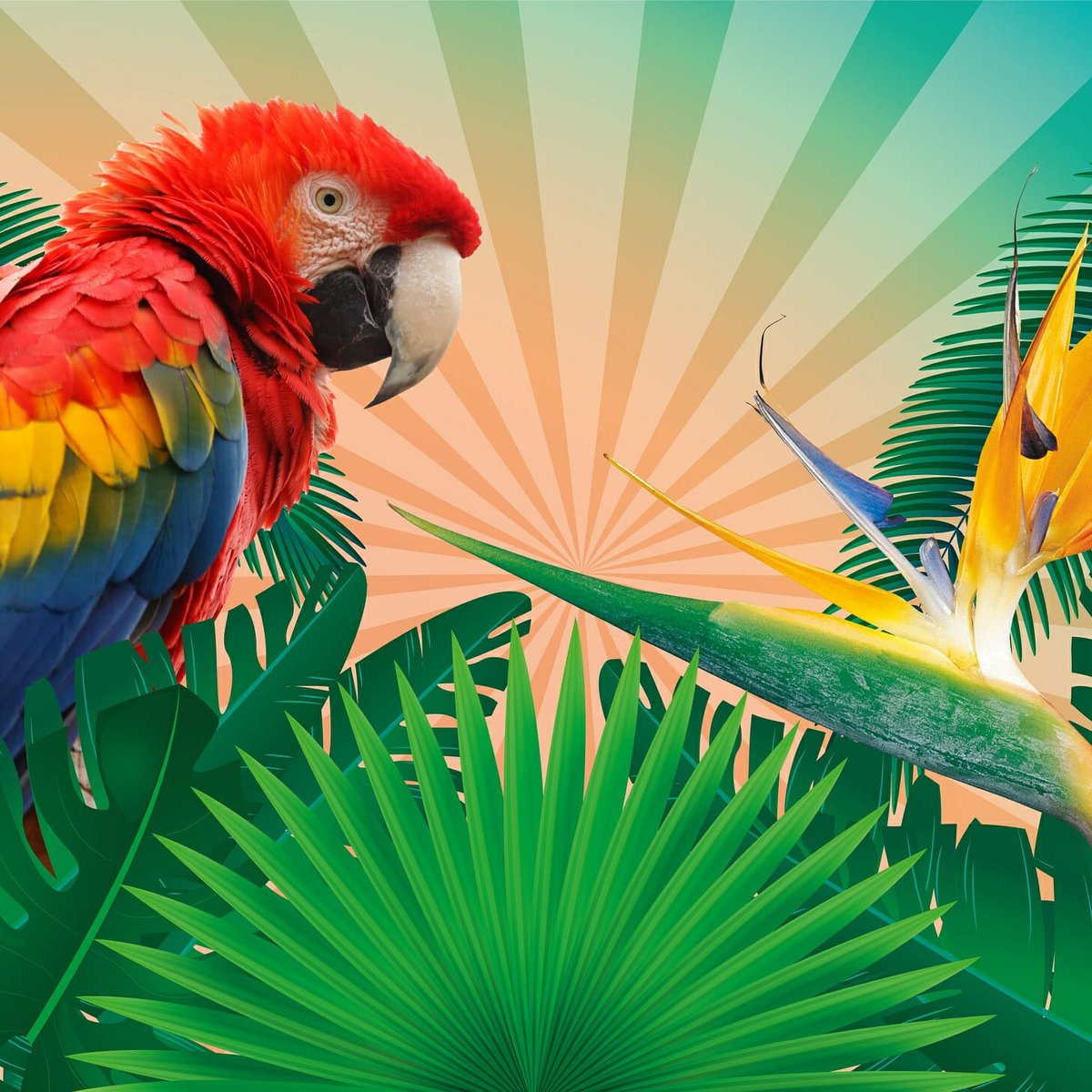
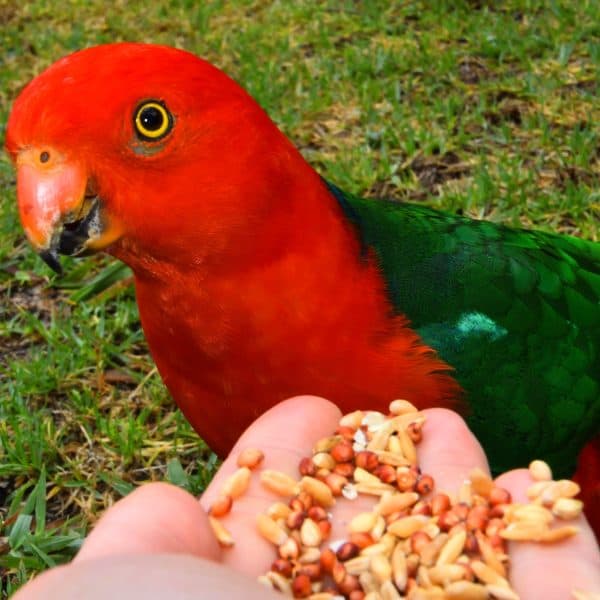
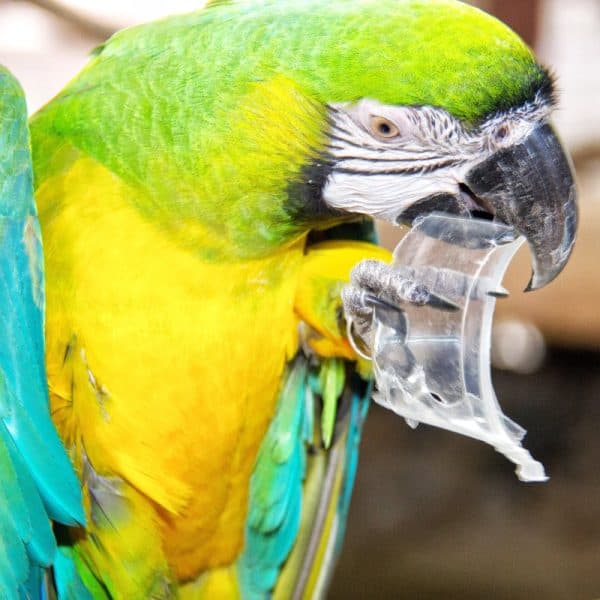
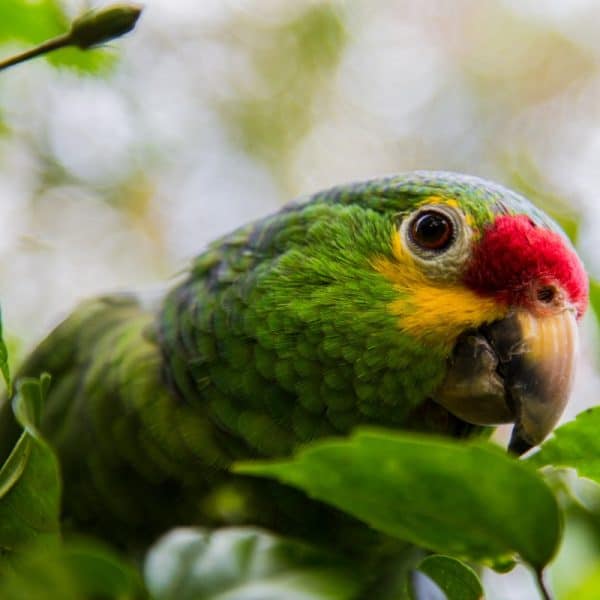

barbara Smock
14 Oct 2018Hi Mitch,
I have lights for my birds – African Grey, Goffins Cockatoo and Sun conure. I seem to have it wrong as far as schedule though! Usually I’ll uncover the birds, potty them individually and then just give them out of the cage time. Lots of cleaning but I enjoy their company. Then around noon I put them in their cages and turn on the lights till about 6pm. So I’m way off with the light schedule – if I leave the light on for 12 hours I wouldn’t get to spend much time with them. Also when the temp is right I put them outside and sit with them for a couple of hours. We also travel to the farm twice a week with them. A 1 1/2 hour trip. Cant wrap my head around the math for 12 hours of cage time! Any suggestions ?
WindyCityParrot
16 Oct 2018Hi Barbara
light cycles are defined by 99 million years of “instinctual expectations”
the majority of parrots are endemic to 40 minutes north (latitude) and 40 minutes south of the equator.
it’s simply about “dont mess with mother nature.
best
Mitch Rezman
CMO/SEO
Windy City Parrot where the sun never sets empire Tel: 312-492-9673 Mobile: 773-848-0687
Fax: 312-492-9674
Website: http://WindyCityParrot.com
Address: 906 N Western Ave 60622
[email protected]
5 Feb 2022Regarding the lighting cycle for parrots, etc.: Would you expect these cycles to be consistent across all birds? We rescued an injured raven and interest in vit D\natural sunlight requirements led me to your blog.
Thank you.
mitchrezman
5 Feb 2022Most parrots are originally indigenous to the equatorial regions 40 minutes north and south of the equator – but ravens are not and used to North American light cycles.
there is not one shred of evidence that sunlight helps produce vitamin D in birds especially since the integumentary systems of feathers cover the other integumentary system of skin where light needs to be absorbed.
It is difficult and costly to determine if a bird has a vitamin A deficiency as vitamin D testing on birds can only be done at the university level, not the vets office.
We provide a water-soluble vitamin https://windycityparrot.com/product/prime-vitamin-water-soluble-for-birds-by-hagen-hari-2-1-oz-60-g/ to our 12 birds daily.
More on testing birds for vitamin D
https://windycityparrot.com/can-i-test-my-pet-bird-for-vitamin-d/
Best
MitchR